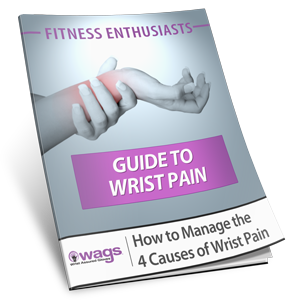How do you know if you have Carpel Tunnel Syndrome (CTS)? Maybe you’ve notice some tingling or numbness in your fingers or hand. Perhaps you’ve got some pain or you can’t open jars as well as you used to because your muscles are getting weaker. What’s the condition that’s causing wrist pain, tingling or numbness? There are some common conditions that can cause these symptoms, so it’s good to know about them to rule them out.
Rheumatoid Arthritis is one condition that can lead to hand pain and numbness and can mirror the early stages of CTS. But the pain is distributed differently in RA. You will likely feel pain in both hands if you have RA and the pain and numbness will be felt in your large finger knuckles and your wrists.
Diabetic Neuropathy, which is nerve damage that can occur with diabetes, and is caused by damage to small vessels due to extended periods of high glucose levels. It is fairly common in diabetics. Diabetic neuropathy, specifically the most common form, peripheral neuropathy, affects the nerves in the hands, arms, feet and legs. Carpal tunnel syndrome refers only to the median nerve.
Cervical radiculopathy is due to a problem in your neck. The pain can be mildly achy or sharp and stabbing. It can also cause numbness or tingling sensations. Depending on what level of the spine the irritated nerve comes from the symptoms will affect different sections of the hand. Carpal tunnel syndrome pain generally affects the hand and wrist. Cervical radiculopathy can often cause pain and symptoms along the arm and in the bicep, as well as in the hand.
Carpal tunnel syndrome is caused by pressure on the median nerve where it passes through a narrow passageway on the palm of your hand – the carpal tunnel.
Here are the symptoms of CTS:
Numbness – typically felt in the wrist and fingers (the thumb, first, second & half of the third finger affected)
Tingling – this may be experienced along the arm, in the wrist or down into the hand and fingers
Shock-like sensations – often unsettling, shooting sensations that go up the arm
Burning sensation – there may be a numbness or burning sensation, usually in the wrist and fingers
Pain – often intense, generally in the wrist area but also can be felt in the hand and up the arm
Weakness or clumsiness – fine motor skills and strength in the fingers and wrist are impacted
Symptoms are often worse at night
It’s important to address CTS in the early phases before the symptoms become severe with nerve and muscle damage occurring. Many times, there is no single cause of carpal tunnel syndrome. It may be a combination of risk factors that contributes to the development of the condition.
Good preventative measures can include wearing a splint at night to keep your wrist neutral. Take short, frequent breaks and gently stretch and bend the hands and wrists. Alternate tasks when possible, especially if using equipment that vibrates or that you exert a great amount of force. Even a few minutes each hour can make a difference. Avoid continually bending your wrists all the way up or down. Make sure your computer mouse is comfortable and doesn’t strain your wrist. Improve your posture. When shoulders roll forward, over time muscles shorten in your neck and shoulder compressing nerves in your neck. This can affect your wrists, fingers and hands, and can cause neck pain. Lastly, keep your hands warm. Hand pain and stiffness can be minimized when you keep your hands and wrists warm.





I have just been diagnosed with Bilateral Arthritis in both of my thumb joints. Had injections that didn’t really offer much relief so was checking into these gloves to see if they would help so I can get back into lifting weights since I haven’t been able to for quite some time due to the pain. If these would help, which one would be recommended for the pain in the bottom part of my thumbs?
Thank you
I think your best choice would be the WAGs Ultra or the WAGs Pro – they both have the slightly thicker gel pads.
The Ultra has a wrist wrap if you want that support and stability and the Pro doesn’t have a wrist wrap. Good Luck!
I have the same issue I was able to have splints made by an occupational therapist with a doctor”s referral otherwise a greater cost to me of over 600 dollars. I needed them to do push ups other wise no need . I do not open pickel jars or other such jars gave that duty to my husband 🙂 but I understand there are devises that work just as well.
I’m glad to hear an OT fixed you up! Have you tried WAGs to help with your push-ups? You’re right there are devices which can help with opening jars, but a handy husband is the best!
I HAD CTS 2 weeks ago. I have been doing yoga daily for over 50 years, as well as teaching yoga. Which gloves will give me support and flexibility now?
You’ll want either the WAGs Pro or WAGs Flex gloves, because they don’t have the wrist wrap which can add pressure to the carpal tunnel area. Of those 2 I think the Pro would be a good choice – it has a thicker pad and will give you more support. Best of luck to you!